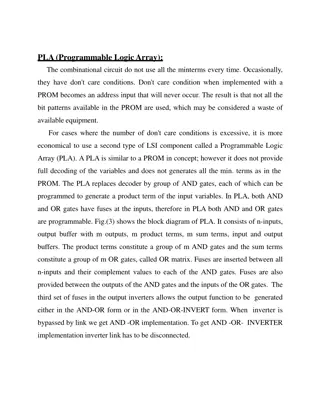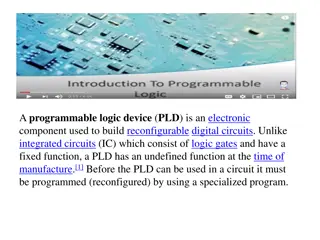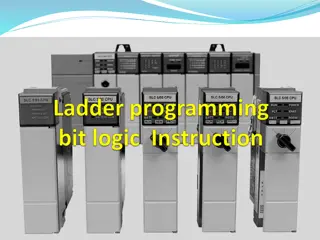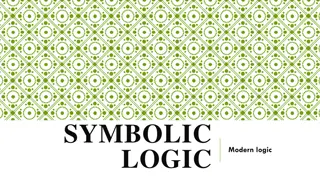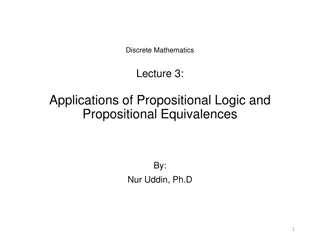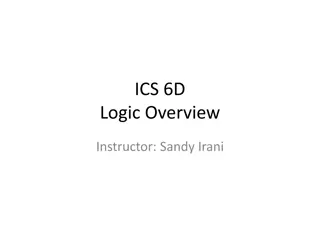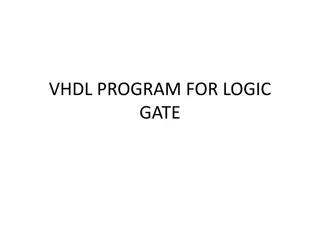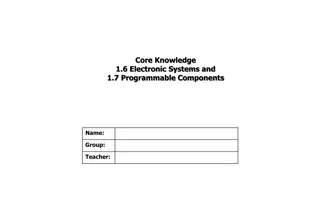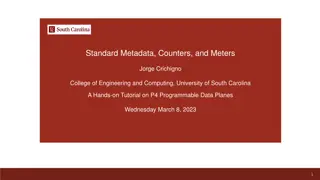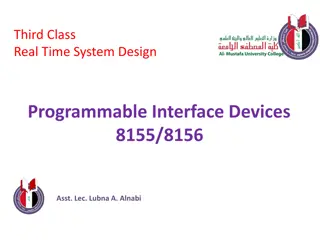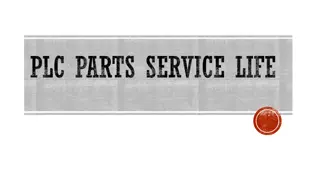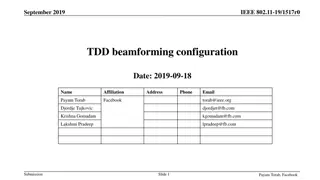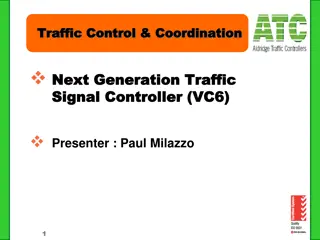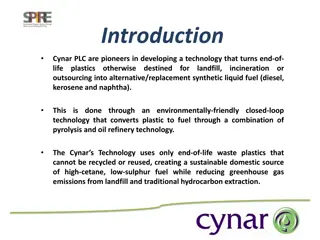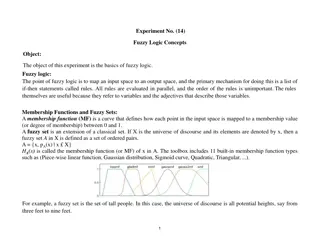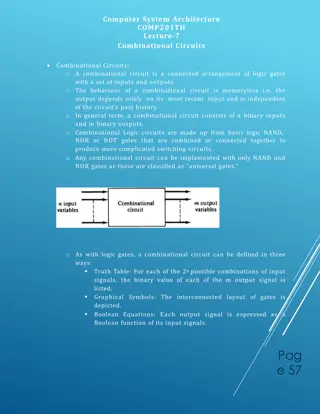Understanding Programmable Logic Controllers (PLC)
Programmable Logic Controllers (PLCs) are tiny computers used to control system functions with programmed logic. They receive inputs and provide operating instructions to automate processes in various industries. PLCs have replaced manual relay-based systems and are essential in industrial control technology worldwide.
Download Presentation

Please find below an Image/Link to download the presentation.
The content on the website is provided AS IS for your information and personal use only. It may not be sold, licensed, or shared on other websites without obtaining consent from the author. Download presentation by click this link. If you encounter any issues during the download, it is possible that the publisher has removed the file from their server.
E N D
Presentation Transcript
StudyMafia.Org Programmable Logic Controller Submitted To: Submitted By: Studymafia.org Studymafia.org
Table Contents Definition Introduction Working of PLC Advantages of PLC Drawbacks of PLC About PLC Conclusion 2
Definition A programmable logic controller is a type of tiny computer that can receive data through its inputs and send operating instructions through its outputs. 3
Introduction Fundamentally, a PLC s job is to control a system s functions using the internal logic programmed into it. Businesses around the world use PLCs to automate their most important processes. A PLC takes in inputs, whether from automated data capture points or from human input points such as switches or buttons. 4
Working of PLC Based on its programming, the PLC then decides whether or not to change the output. A PLC s outputs can control a huge variety of equipment, including motors, solenoid valves, lights, switchgear, safety shut-offs and many others. 6
Working of PLC The physical location of PLCs can vary widely from one system to another. Usually, however, PLCs are located in the general vicinity of the systems they operate, and they re typically protected by a surface mount electrical box. PLCs largely replaced the manual relay- based control systems that were common in older industrial facilities. 7
Working of PLC Relay systems are complex and prone to failure and, in the 1960s, the inventor Richard Morley introduced the first PLCs as an alternative. Manufacturers quickly realized the potential of PLCs and began integrating them into their work processes. Today, PLCs are still a fundamental element of many industrial control systems. 8
Working of PLC In fact, they re still the most used industrial control technology worldwide. The ability to work with PLCs is a required skill for many different professions, from the engineers designing the system to the electrical technicians maintaining it. 9
Advantages of PLCs PLCs are fairly intuitive to program. Their programming languages are simple in comparison to other industrial control systems, which makes PLCs great for businesses that want to minimize complexity and costs. PLCs are a mature technology with years of testing and analysis backing them up. It s easy to find robust research about many different PLC types and comprehensive tutorials for programming and integrating them. 10
Advantages of PLCs PLCs are available at a wide range of price points, including many extremely affordable basic models that small businesses and startups often use. PLCs are extremely versatile, and most PLC models are suitable for controlling a wide variety of processes and systems. 11
Advantages of PLCs PLCs are completely solid-state devices, which means they have no moving parts. That makes them exceptionally reliable and more able to survive the challenging conditions present in many industrial facilities. 12
Advantages of PLCs PLCs have relatively few components, which makes them easier to troubleshoot and helps reduce maintenance downtime. PLCs are efficient and don t consume very much electrical power. This helps conserve energy and may simplify wiring considerations. 13
Drawbacks of PLCs PLCs have less capacity to handle extremely complex data or large numbers of processes that involve analog rather than discrete inputs. As manufacturing facilities become more integrated and involved, increasing numbers of them may shift toward a distributed control system or another alternative industrial control method. 14
Drawbacks of PLCs PLCs from different manufacturers often use proprietary programming software. This makes PLC programming interfaces less interoperable than they might be, especially considering that their programming languages share common standards 15
Drawbacks of PLCs PLCs, like many other types of electronic equipment, are vulnerable to electromagnetic interference (EMI). They can also experience other kinds of common electronics malfunctions such as corrupted memory and communication failures. 16
About PLC Electrical Capacity: PLCs have different voltage requirements for their power supplies, so check to ensure that your selection is compatible with your electrical system. Processing Speed: Check a PLC model s CPU speed to determine whether it meets your application s needs. 17
About PLC Compatibility: Ensure that your PLC model is compatible with any new or existing system hardware, whether that s power supplies or DIN rails. Temperature Tolerance: Most PLCs are designed for safe operation within the range of 0 to 60 C. However, some specialized PLC models can operate at extreme temperatures. 18
About PLC Memory: A PLC needs sufficient ROM and RAM to execute the processes it s intended to automate. Connectivity: Make sure your PLC has enough input and output ports, and make sure it s able to connect to the type of peripherals that your system requires. 19
About PLC Analog I/O: Although PLCs are primarily used for discrete functions, some models also have analog inputs and outputs that can control processes with continuous variables. 20
Conclusion PLC stands for Programmable Logic Controller. They are industrial computers used to control different electro-mechanical processes for use in manufacturing, plants, or other automation environments. 22
References Google.com Wikipedia.org Studymafia.org Slidespanda.com
Thanks To StudyMafia.org


